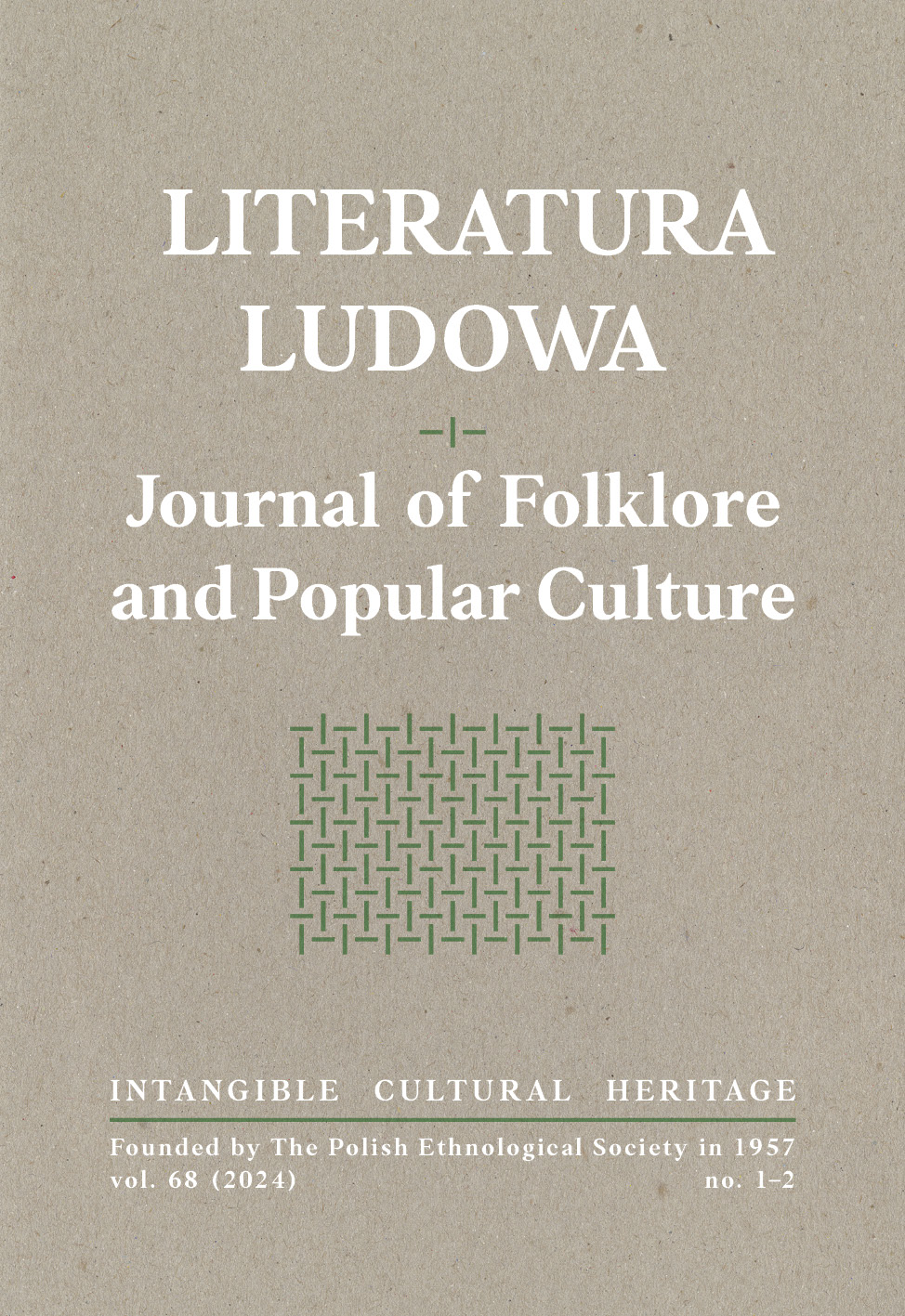Verbuňk and Rides of the Kings: Reflections on Transformations of Tradition in the Light of Intangible Cultural Heritage
DOI:
https://doi.org/10.12775/LL.1.2024.009Słowa kluczowe
Czech Republic, Moravia, folk traditions, intangible cultural heritage, verbuňk, ride of the kingsAbstrakt
The study of manifestations of folk culture (including those that have survived in modern society) provides a valuable research field for learning about the mechanisms of tradition and its functioning. In addition to the immanent development of tradition, however, it is always necessary to pay attention to external impulses. In the last two decades, the concept of intangible cultural heritage (ICH) certainly belongs to them, as not only is it a theoretical starting point for grasping the study of folk traditions in the present, but it also has a retroactive effect on their form and longevity. The basis of the presented contribution is a reflection on this issue in the Czech environment, particularly concerned with two examples from the region of South-Eastern Moravia: the solo male dance verbuňk, which was entered on Representative List of UNESCO in 2005 (respectively 2008), and the custom “the ride of the kings”, which was entered on the same list in 2011.
Bibliografia
Doušek, R. (2016). Sociální souvislosti folklorismu na Moravě na konci 19. století. Český lid, 103(2), 199–216.
Habartová, R., Štěrba, S. (2008). Jízda králů v Kunovicích. Město Kunovice.
Janeček, P. (2015). Evropská etnologie a koncept nehmotného kulturního dědictví. Národopisná revue, 25(3), 273–282.
Krist, J., Pavlicová, M. (2015). Národní ústav lidové kultury a Mezinárodní folklorní festival ve Strážnici (k 60. výročí založení ústavu a 70. výročí konání festivalu). Národopisná revue, 25(4), 278–291.
Maňáková, M. (2022). Role školy a pedagogů v transmisi lidové kultury na Horňácku [master thesis]. Masaryk University Digital Repository. https://is.muni.cz/th/juahc/
Pavlicová, M. (2007). Lidová kultura a její historicko-společenské reflexe. Ústav evropské etnologie, Masarykova univerzita.
Pavlicová, M. (2017). The folk tradition and its transformation in the context of social influences and contributions by individuals: Using the Slovácko ‘Verbuňk’ male recruitment dance as an example. Glasnik Etnografskog instituta SANU, 65(2), 305–320.
Pavlicová, M. (2021). The Image of Staged Folk Culture: From the Presentations of Traditions to a Staged Genre. Národopisná revue, 31(5), 21–32.
Pavlicová, M., Uhlíková, L. (2013). Folklor jako součást nehmotného kulturního dědictví: Kam s ním? In I. Přibylová, L. Uhlíková (eds.), Od folkloru k world music: Co patří do encyklopedie? (pp. 9–21). Městské kulturní středisko.
Smeets, R. (2022). From folklore to living heritage: On the development of UNESCO’s contribution to the safeguarding of the intangible cultural heritage. Národopisná revue, 32(2), 83–98.
Stavělová, D. (Ed.) (2021). Tíha a beztíže folkloru. Folklorní hnutí druhé poloviny 20. století v českých zemích. Academia.
Teturová, J. (2012). Verbuňk v Žatčanech na Brněnsku v současném kulturně-společenském kontextu. Národopisná revue, 22(4), 275–279.
Zeman, M. (1951). Horňácké tance. Orbis.
Pobrania
Opublikowane
Jak cytować
Numer
Dział
Licencja
Prawa autorskie (c) 2024 Martina Pavlicová

Utwór dostępny jest na licencji Creative Commons Uznanie autorstwa – Bez utworów zależnych 4.0 Międzynarodowe.
Prawa autorskie/Copyright Notice
1. Autorzy udzielają wydawcy (Polskiemu Towarzystwu Ludoznawczemu) licencji niewyłącznej na korzystanie z utworu w następujących polach eksploatacji:a) utrwalanie Utworu/przedmiotu prawa pokrewnego;
b) reprodukowanie (zwielokrotnienie) Utworu/przedmiotu prawa pokrewnego drukiem i techniką cyfrową (ebook, audiobook);
c) wprowadzania do obrotu egzemplarzy zwielokrotnionego Utworu/przedmiotu prawa pokrewnego;
d) wprowadzenie Utworu/przedmiotu prawa pokrewnego do pamięci komputera;
e) rozpowszechnianie utworu w wersji elektronicznej w formule open access na licencji Creative Commons (CC BY - ND 3.0).
2. Autorzy udzielają wydawcy licencji nieodpłatnie.
3. Korzystanie przez wydawcę z utworu na ww. polach nie jest ograniczone czasowo, ilościowo i terytorialnie.
Statystyki
Liczba wyświetleń i pobrań: 233
Liczba cytowań: 0



